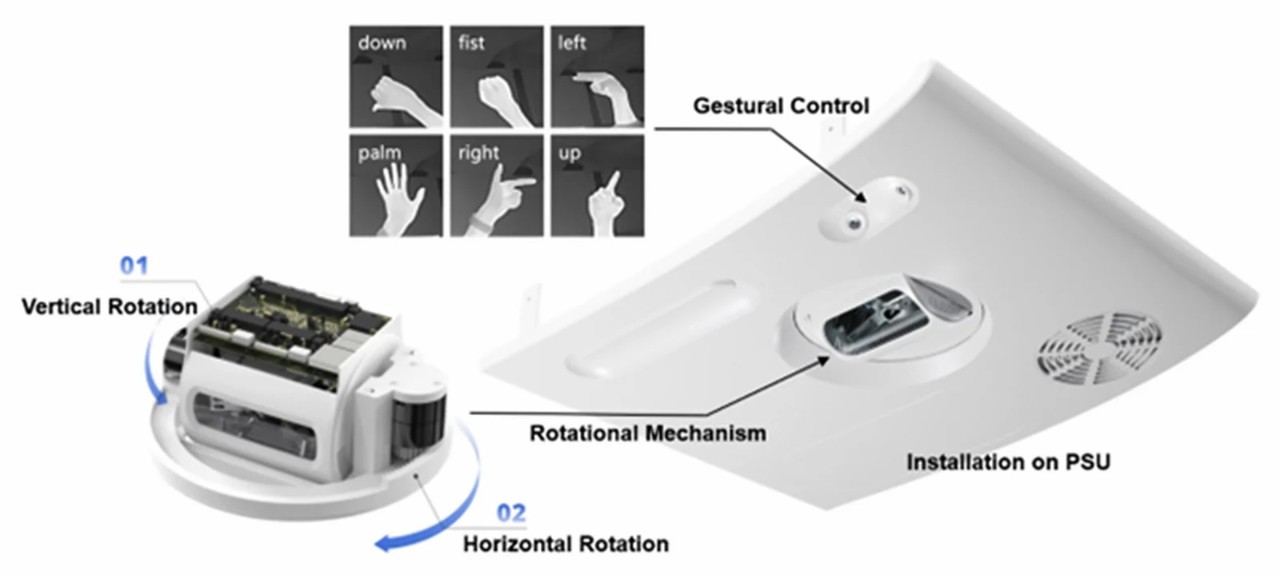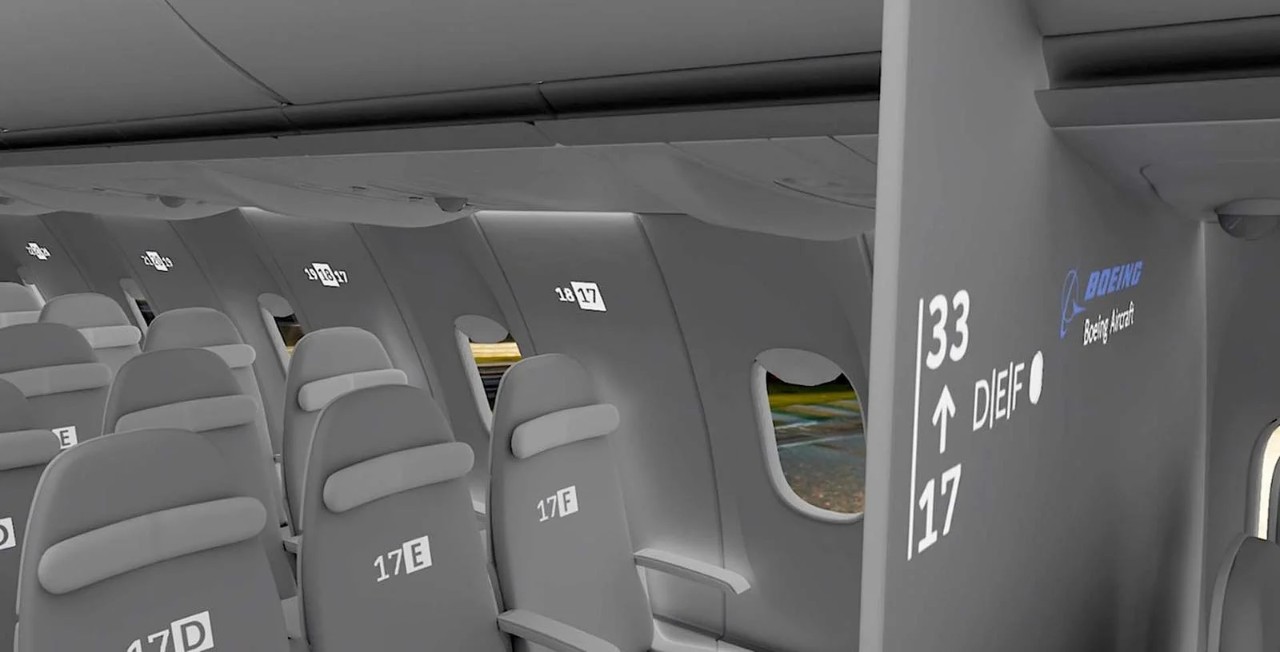Technology concept takes in-flight entertainment off screen
The innovation being developed by Boeing and university students could reduce weight and power consumption by 50%.

Above: The concept could eliminate traditional seatback screens by projecting content onto various cabin surfaces while using gesture recognition technology for passenger control. (© Boeing image)
Boeing and Shanghai-based Tongji University are developing an in-flight entertainment and information display system that uses compact projectors to transform cabin surfaces into interactive displays.
- The concept, which is under development and not available to be offered, could eliminate traditional seatback screens by projecting content onto various cabin surfaces while using gesture recognition technology for passenger control.
Why it matters: The technology may reduce weight and power consumption by 50% compared to conventional systems.
- “This promising exploration of bringing projection technology to a cabin environment would fulfill a common request from our airline customers — offer premium digital experiences while saving fuel, space and maintenance costs, which also fits into our vision to create a transformative experience within the cabin," said Joe Keegan, Boeing director of Product Development.
- “The innovation is a result of Boeing's long-standing relationship with Tongji University and demonstrates the company's commitment to developing talent and new technologies in the region,” said Peter Li, managing director, Boeing Technology Innovation, China.

The rotatable projection system is integrated into the passenger service unit and is controlled by passenger’s gestural commands. (© Boeing image)
How it works: The projection system integrates into the passenger service unit (PSU) and transforms cabin surfaces into interactive displays.
- Each projector serves up to four seats, projecting content onto seat surfaces and cabin dividers.
- Integrated infrared sensors enable passengers to control the system through intuitive gestures.

Cabin divider displays enable passengers to easily find their seats. (© Boeing image)
Behind the scenes: Boeing initiated the research project three years ago, with Boeing Technology Innovation teammates working alongside Commercial Airplanes' Product Development team to develop the technology vision and requirements.
- “Boeing’s industrial expertise helped us overcome design challenges and refine the concept,” said Jiao Mo, associate professor and research partner from Tongji University.
Led by Zhongzhe Dong of Boeing Technology Innovation-China, the Boeing team provided technical support through the system development process – from initial concept design to the current stage.
What's next: Boeing and Tongji University plan to continue developing and testing the cabin system to enhance its technical readiness and commercial feasibility.
Go deeper: The team received the Crystal Cabin Award at the 2025 Aircraft Interiors Expo in Hamburg, Germany.